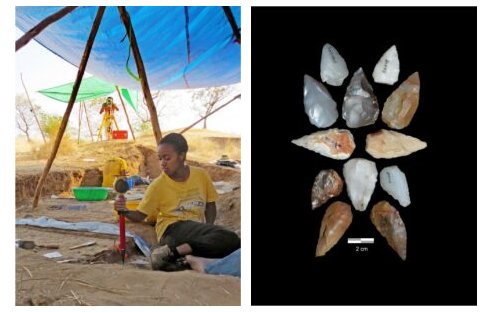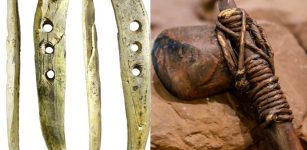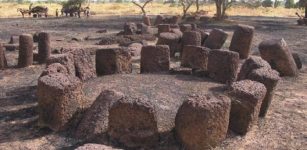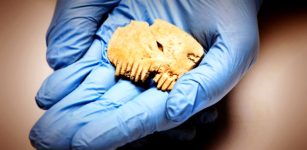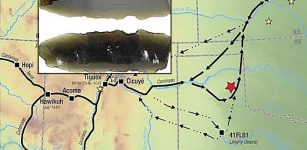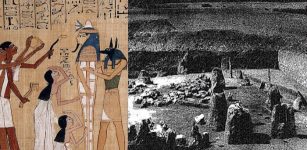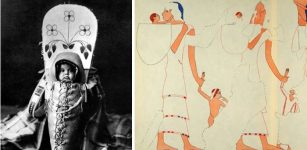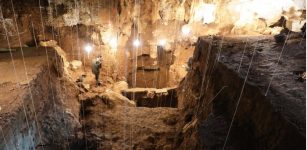‘Blue Highways’ Helped Middle Stone Age Humans Who Survived The Toba Supereruption 74,000 Years Ago
Jan Bartek - AncientPages.com - Researchers working in the Horn of Africa have uncovered evidence showing how Middle Stone Age humans survived in the wake of the eruption of Toba, one of the largest supervolcanoes in history, some 74,000 years ago.
The adaptability exhibited by the people of the Middle Stone Age not only enabled their survival through the catastrophic supereruption but also paved the way for the subsequent migration of modern humans from Africa to other parts of the globe.
Credit: Adobe Stock - Marco
Modern humans have migrated from Africa on several occasions, but the significant event that resulted in a worldwide spread took place less than 100,000 years ago. Some scientists propose that these migrations were confined to "green corridors," which emerged during periods of high humidity. During this period, food was plentiful, and human populations expanded in lockstep with their environments.
However, a recent study published in Nature by researchers at The University of Texas at Austin proposes an alternative theory. It suggests that humans may have also migrated during dry periods via "blue highways" created by seasonal rivers. Additionally, the researchers discovered stone tools, which constitute the earliest known evidence of archery.
The research team conducted a study at the Shinfa-Metema 1 site, located in the lowlands of what is now northwestern Ethiopia, along the Shinfa River, which feeds into the Blue Nile River. The team's conclusions were drawn from isotope geochemistry analyses of fossil mammal teeth and ostrich eggshells. They determined that humans inhabited this area during periods characterized by extended dry seasons, comparable to some of East Africa's most seasonally arid habitats today. The researchers also discovered evidence suggesting that inhabitants adapted to periods when river flows ceased due to droughts by hunting animals that gathered at remaining water sources for hydration. As these waterholes progressively diminished in size, it became simpler for people to catch fish without needing specialized equipment, leading to a dietary shift towards more fish consumption.
Credit: The University of Texas at Austin
The supereruption transpired during the period when the site was inhabited, as evidenced by minuscule glass shards that share a chemical composition with Toba. This event seems to have resulted in an extended dry season, causing local inhabitants to depend more heavily on fish for sustenance. Reducing water sources may have also triggered human migration as people sought additional food resources elsewhere.
“As people depleted food in and around a given dry season waterhole, they were likely forced to move to new waterholes,” said John Kappelman, a UT anthropology and earth and planetary sciences professor and lead author of the study.
“Seasonal rivers thus functioned as ‘pumps’ that siphoned populations out along the channels from one waterhole to another, potentially driving the most recent out-of-Africa dispersal.”
The inhabitants of Shinfa-Metema 1 are not likely to have been part of the group that migrated out of Africa. Nevertheless, their behavioral adaptability, which enabled them to survive harsh climatic events such as the Toba supereruption, was likely a crucial characteristic of Middle Stone Age humans. This trait facilitated our species' eventual departure from Africa and global expansion.
These individuals hunted a diverse range of terrestrial animals at the Shinfa-Metema 1 site, including antelope and monkeys. This is evidenced by cut marks found on bones discovered at the location. Additionally, signs of controlled fire suggest that they cooked their food. The most notable stone tools discovered at this site are small triangular points exhibiting symmetry.
Left: Excavations at a Middle Stone Age archaeological site, Shinfa-Metema 1, in the lowlands of northwest Ethiopia revealed a population of humans at 74,000 years ago that survived the eruption of the Toba supervolcano. Credit: The University of Texas at Austin - Right: Projectile points from a Middle Stone Age archaeological site, Shinfa-Metema 1, in the lowlands of northwest Ethiopian dating from the time of the Toba supereruption at 74,000 years ago provide evidence for bow and arrow use prior to the dispersal of modern humans out of Africa. Photograph by Blue Nile Survey Project.
“Analyses show that the points are most likely arrowheads that, at 74,000 years in age, represent the oldest evidence of archery,” Kappelman said. “The Ethiopian Heritage Authority has made 3D scans of the points available so that anyone anywhere in the world can download the files and evaluate the hypothesis for themselves.”
The study was published in the journal Nature
Written by Jan Bartek - AncientPages.com Staff Writer



